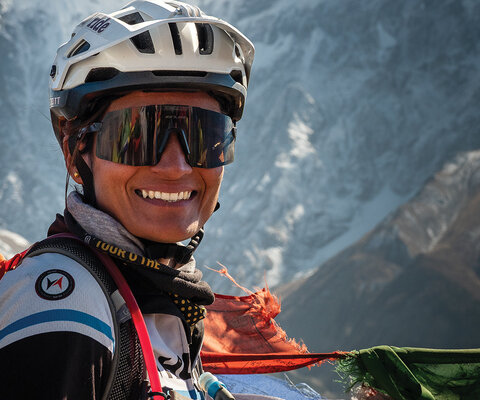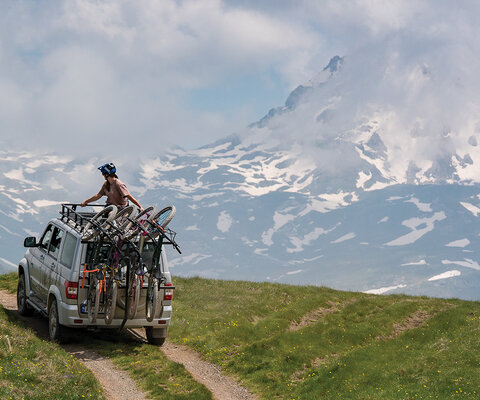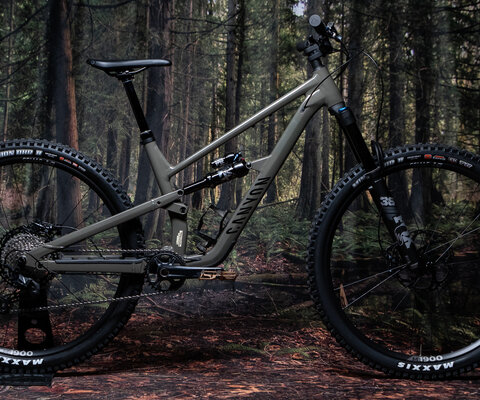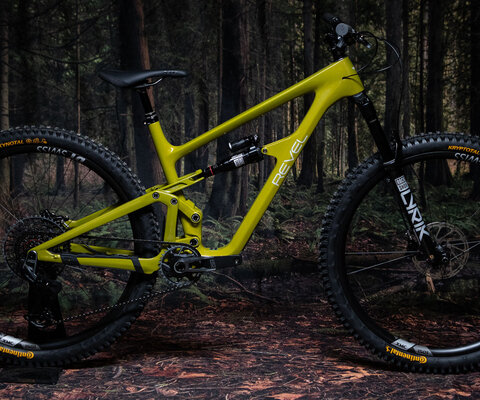
A Steady Drift Navigating Japan’s Winds of Change
Words by KC Deane | Photos by Grant Gunderson
In most parts of the world, you can usually expect a mountain bike trip to involve a little rain and wind.
But a typhoon or tropical cyclone can be a whole other matter. So, when I woke up last October to the news that a Category 5 “super typhoon” was ravaging Japan’s main island of Honshu—barely three weeks before a planned bike trip to the city of Tōkamachi—I was all but sure the trip would be called off.
After all, Typhoon Hagibis was the strongest tropical cyclone in decades to strike mainland Japan, and it was one of the largest typhoons ever recorded, at a peak diameter of 825 nautical miles. For almost a week, Hagibis dumped rain and unleashed 100-mile-per-hour winds on Honshu, causing catastrophic flooding across the Nagano region—just to the south of where we were due to ride near Tōkamachi. I first thought of my friends who call the Nagano area home, and then I wondered about the impact this would have on our planned bike trip with Scottish pro rider Scotty Laughland and American photographer Grant Gunderson.
With our fall riding escape in question, we called Bill Ross, an American expatriate who has lived in Japan for most of his life. As the owner of ski touring and hiking company Dancing Snow, Bill was well acquainted with the region’s trails, and he assured us that Tōkamachi had not been hit nearly as hard by the typhoon as Nagano. So, when the rains began to subside over the following two weeks, we decided to give it a go.
Just four hours before Grant and I boarded our last flight to Tokyo, we were watching the news of a Category 4 typhoon that was building off the coast of Honshu. We’d already come this far, so we decided to hop our flight and hope for the best. Some 10 hours later, as we were approaching Tokyo, we encountered some of the roughest turbulence I’ve ever experienced, and our landing was diverted. As I watched Tokyo disappear in the distance, not knowing exactly where we would land, I thought our trip was ending before it had even begun.
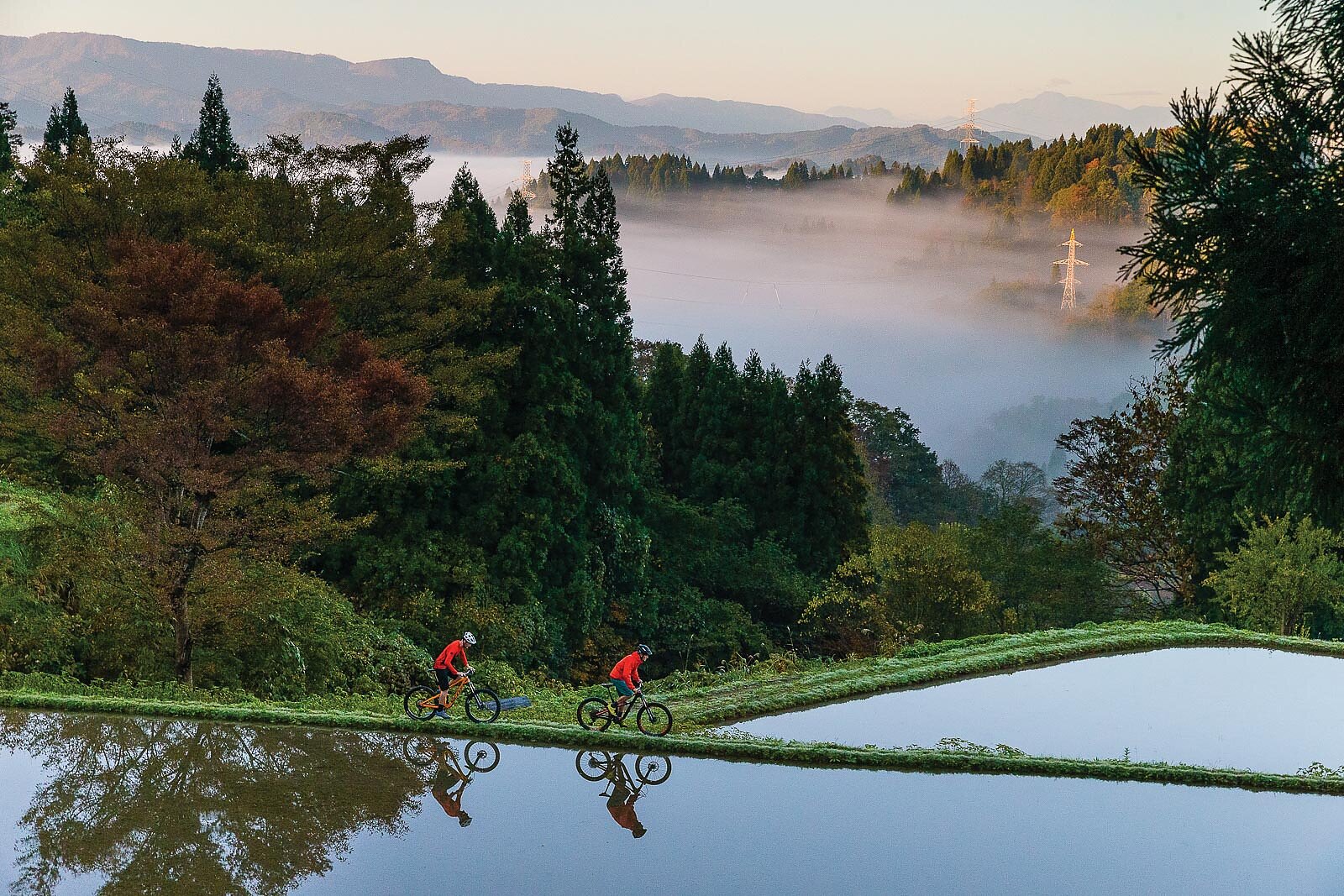
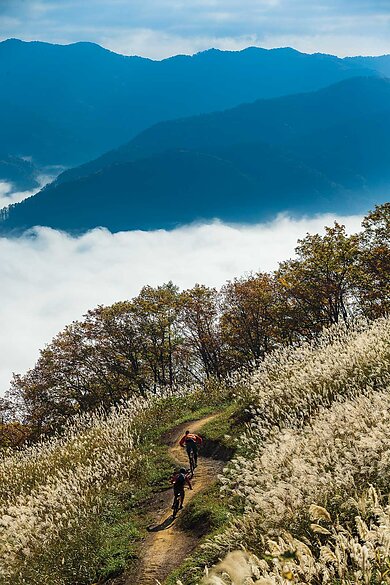
We eventually touched down more than 200 miles to the southeast of Tokyo, in the city of Nagoya, feeling thankful just to be on the ground. Still, we needed to make our way some eight hours north to Tōkamachi, and we had no idea where our other teammate, Scotty—who was flying to Japan from Scotland—would eventually land. We decided it was best to make a beeline for Tōkamachi, so we headed to the train station with bike bags in tow. Eight hours later, expat Bill was plucking us off the Tōkamachi station platform.
The next morning, we got word that Scotty had landed safely in Tokyo and was en route to Tōkamachi, so Grant and I decided to explore some of the local trails. The latest rainstorms had wreaked havoc on the area, and the dirt was like something out of my worst nightmare. It was so slippery I thought that adding some grease and banana peels might actually make things better. Just as Grant and I were about to throw in the towel for the day, Scotty arrived to find us slogging our way through a series of rice paddies on our way back to the house.
“The culture of Japan makes a bike trip memorable even if you are shut down for riding because of the rain,” Grant said half-jokingly, so we set out on foot to check out the town and enjoy some local food while we waited for the sun to dry out the trails.
It was a pleasurable wait, and when the trails had begun to dry, we realized it was more than worth it: There was so much variety, from high ridgelines all the way down to rice paddies, with prime singletrack connecting one valley to the next. Much of the dirt was clay, and there were some crazy technical root sections, often blanketed by a sea of leaves from the Japanese beech trees, or buna. Scotty and I loved drifting through these piles of leaves, and the action seemed like a metaphor for our trip as a whole: Without a fixed plan, we could drift along, exploring whatever struck our fancy.

After a few days in Tōkamachi, we packed the van bound for the heart of Nagano Prefecture in search of fall color. We based ourselves in the village of Hakuba, a winter sports hub in the Japanese Alps that has long been known for its Alaska style mountains. During the warmer months, Hakuba has also become a popular mountain bike destination, with plenty of singletrack and a fledgling bike park that is steadily expanding its trails.
All this has not come without challenges, says our guide, Isamu Hori. He and his friend, Takashi Minamiura, were among the first mountain bikers to ride above tree line in the Japanese Alps, but their high-alpine activities were short lived. Much of this area is part of the Chubu Sangaku National Park, and, as such, is off limits to mountain bikes. As a result, trailbuilding around Hakuba requires close cooperation between builders and local officials, but with thoughtful planning and open communication the riding community has made great headway in recent years.
Adding to the diversity of trails in the Hakuba area, the Hakuba Iwatake Mountain Resort has been leading the way by developing a bike park that keeps the resort open during the summer months. Although the park’s trail network is still limited, the ones that have been finished are on par with some of the world’s best bike parks. Scotty and I spent hours doing laps on these runs, flowing through steep berms built amid the buna trees. It was a cornering paradise with an added surprise: a super fun jump line that kept Scotty and me airborne for hours on end.
Just outside of the bike park, we rode some wild singletrack that led us a couple of valleys away from town via a tree covered ridgeline that felt like a forested version of a Utah spine. None of us had expected this type of terrain, and we reveled in our good fortune as we reflected upon the ultra-rainy start to our trip. Just as the Japanese riding community must flow through the bureaucratic barriers to mountain biking, our ability to steadily drift with the ever-changing weather allowed us to experience some of the best trails Japan has to offer.
